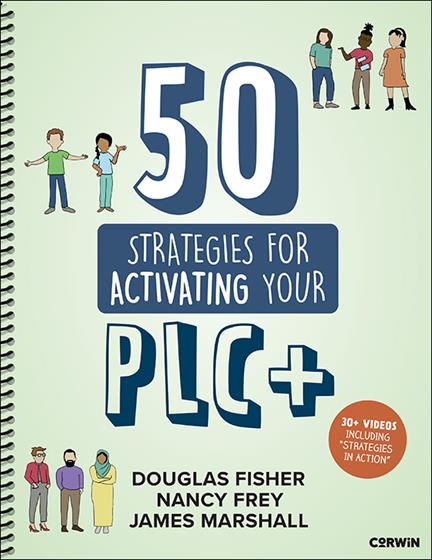Strategy and Usage Overview
Introduction
The Development of Professional Learning Communities
Stepping Into the Activator Role
Activators Make Things Happen
An Overview of This Guide
Your Activation Goal
Your Introduction to PLC+ Content Cross-Reference Table
50 Strategies for Activating Your PLC+
Activating Questions 1–5
1. Activating Question 1: Where are we going?
2. Activating Question 2: Where are we now?
3. Activating Question 3: How do we move learning forward?
4. Activating Question 4: What did we learn today?
5. Activating Question 5: Who benefited and who did not benefit?
Activator Skills and Abilities
6. Activator Skills and Abilities: Activating to Achieve a True Impact on Learning
7. Activator Skills and Abilities: Assessing Your Activator Fitness Level
8. Activator Skills and Abilities: Defining Your Activator Role
9. Activator Skills and Abilities: Developing Successful PLC+ Activators
10. Activator Skills and Abilities: Facilitation Self-Assessment
11. Activator Skills and Abilities: Facilitating With Grace
12. Activator Skills and Abilities: Finding the Key Activator
Continuous Improvement
13. Continuous Improvement: Discussions and Actions
14. Continuous Improvement: Making Course Corrections
15. Continuous Improvement: Taking Priority Practices to Scale
16. Continuous Improvement: Strong Team Structures to Achieve High Function
Function and Impact
17. Function and Impact: Activating Others by Sharing Your PLC+ Success
18. Function and Impact: Applying Evaluative Thinking
19. Function and Impact: Assessing PLC+ Readiness
20. Function and Impact: Assessing Your Current PLC+ Performance
21. Function and Impact: Building Momentum With Early Wins
22. Function and Impact: Evaluating Your PLC+ Progress and Impact
23. Function and Impact: Increasing Impact in PLC+ Teams
24. Function and Impact: Realizing the Optimal Combination of Function and Impact
Meeting Moves
25. Meeting Moves: Coming to Agreement About Professional Learning
26. Meeting Moves: Documentation and Note-Taking
27. Meeting Moves: Effectively Activating When Meetings Become Challenging
28. Meeting Moves: Establishing Norms
29. Meeting Moves: Establishing PLC+ Roles
30. Meeting Moves: Finding Solid Ground in Assessments and Data
31. Meeting Moves: Social Emotional Check-Ins
32. Meeting Moves: Utilizing Authentic Instructional Protocols
Norms of Collaborative Work
33. Norms of Collaborative Work 1: Pausing
34. Norms of Collaborative Work 2: Paraphrasing
35. Norms of Collaborative Work 3: Posing Questions
36. Norms of Collaborative Work 4: Providing Data
37. Norms of Collaborative Work 5: Putting Ideas on the Table
38. Norms of Collaborative Work 6: Paying Attention to Self and Others
39. Norms of Collaborative Work 7: Presuming Positive Intentions
Team Dynamics
40. Team Dynamics: Achieving Team Psychological Safety
41. Team Dynamics: Activating Dialogue When Topics Become Sensitive
42. Team Dynamics: Activating When Team Members Do Not Want to Change
43. Team Dynamics: Analyzing and Describing Team Strengths
44. Team Dynamics: Breaking Barriers, Bringing Team Members Together
45. Team Dynamics: Countering Resistance With Will, Skill, Knowledge, Capacity, and Emotional Support
46. Team Dynamics: From Independent to an Interdependent PLC+
Time Matters
47. Time Matters: Developing an Assessment Calendar
48. Time Matters: Scheduling PLC+ Meetings
49. Time Matters: Setting Aside Time for the PLC+
Reflecting on Your Activation of the PLC+ Journey
50. Metareflection and Intention Setting With the 5Ds
References
Index




